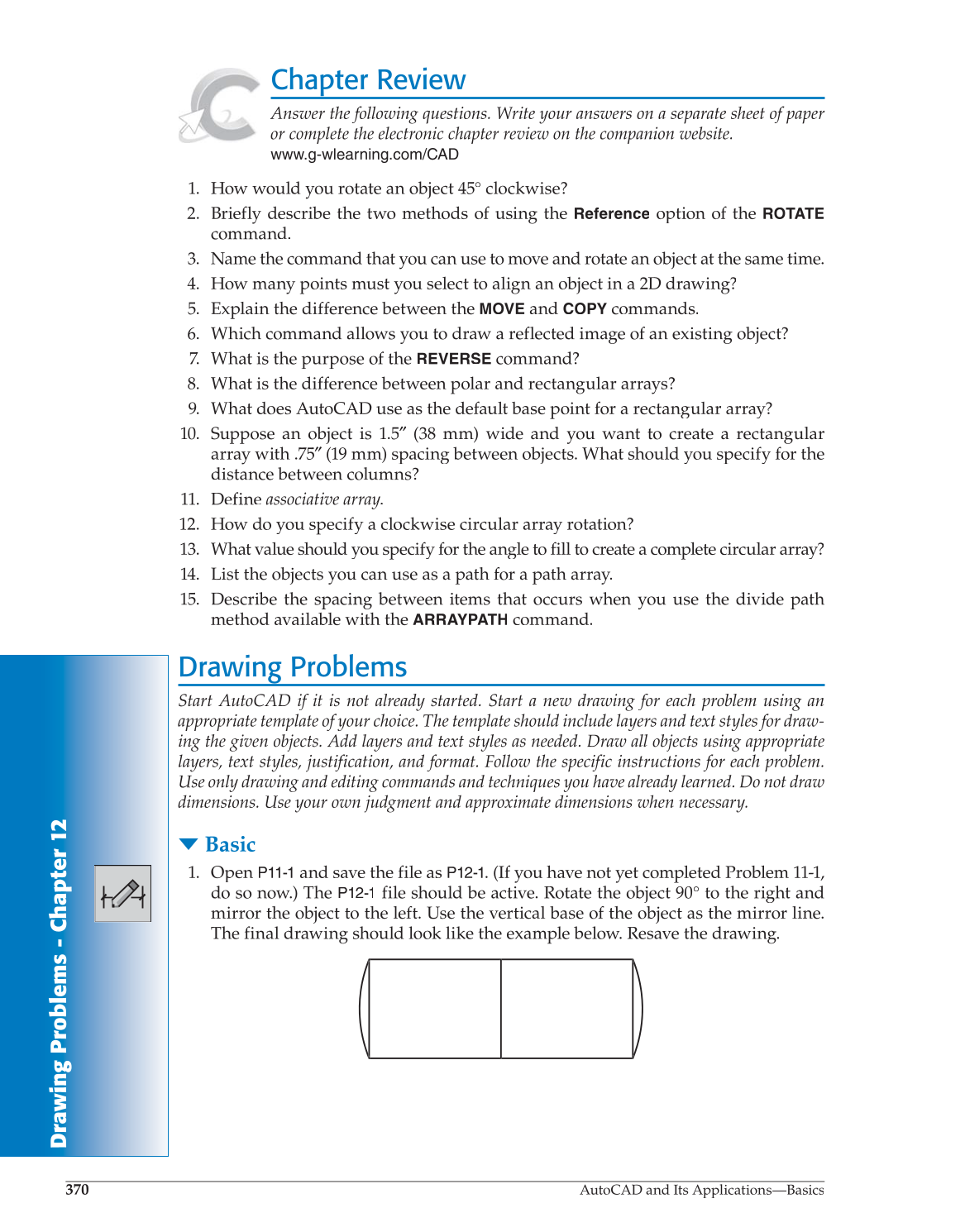Drawing
Problems
-
Chapter
12
370
AutoCAD and Its Applications—Basics
Chapter Review
Answer the following questions. Write your answers on a separate sheet of paper
or complete the electronic chapter review on the companion website.
www.g-wlearning.com/CAD
1. How would you rotate an object 45° clockwise?
2. Briefly describe the two methods of using the
Reference
option of the
ROTATE
command.
3. Name the command that you can use to move and rotate an object at the same time.
4. How many points must you select to align an object in a 2D drawing?
5. Explain the difference between the
MOVE
and
COPY
commands.
6. Which command allows you to draw a reflected image of an existing object?
7. What is the purpose of the
REVERSE
command?
8. What is the difference between polar and rectangular arrays?
9. What does AutoCAD use as the default base point for a rectangular array?
10. Suppose an object is 1.5″ (38 mm) wide and you want to create a rectangular ″
array with .75″ (19 mm) spacing between objects. What should you specify for the ″
distance between columns?
11. Define associative array.
12. How do you specify a clockwise circular array rotation?
13. What value should you specify for the angle to fill to create a complete circular array?
14. List the objects you can use as a path for a path array.
15. Describe the spacing between items that occurs when you use the divide path
method available with the
ARRAYPATH
command.
Drawing Problems
Start AutoCAD if it is not already started. Start a new drawing for each problem using an
appropriate template of your choice. The template should include layers and text styles for draw-
ing the given objects. Add layers and text styles as needed. Draw all objects using appropriate
layers, text styles, justification, and format. Follow the specific instructions for each problem.
Use only drawing and editing commands and techniques you have already learned. Do not draw
dimensions. Use your own judgment and approximate dimensions when necessary.
▼
Basic
1. Open
P11-1
and save the file as P12-1. (If you have not yet completed Problem 11-1,
do so now.) The
P12-1
file should be active. Rotate the object 90° to the right and
mirror the object to the left. Use the vertical base of the object as the mirror line.
The final drawing should look like the example below. Resave the drawing.
